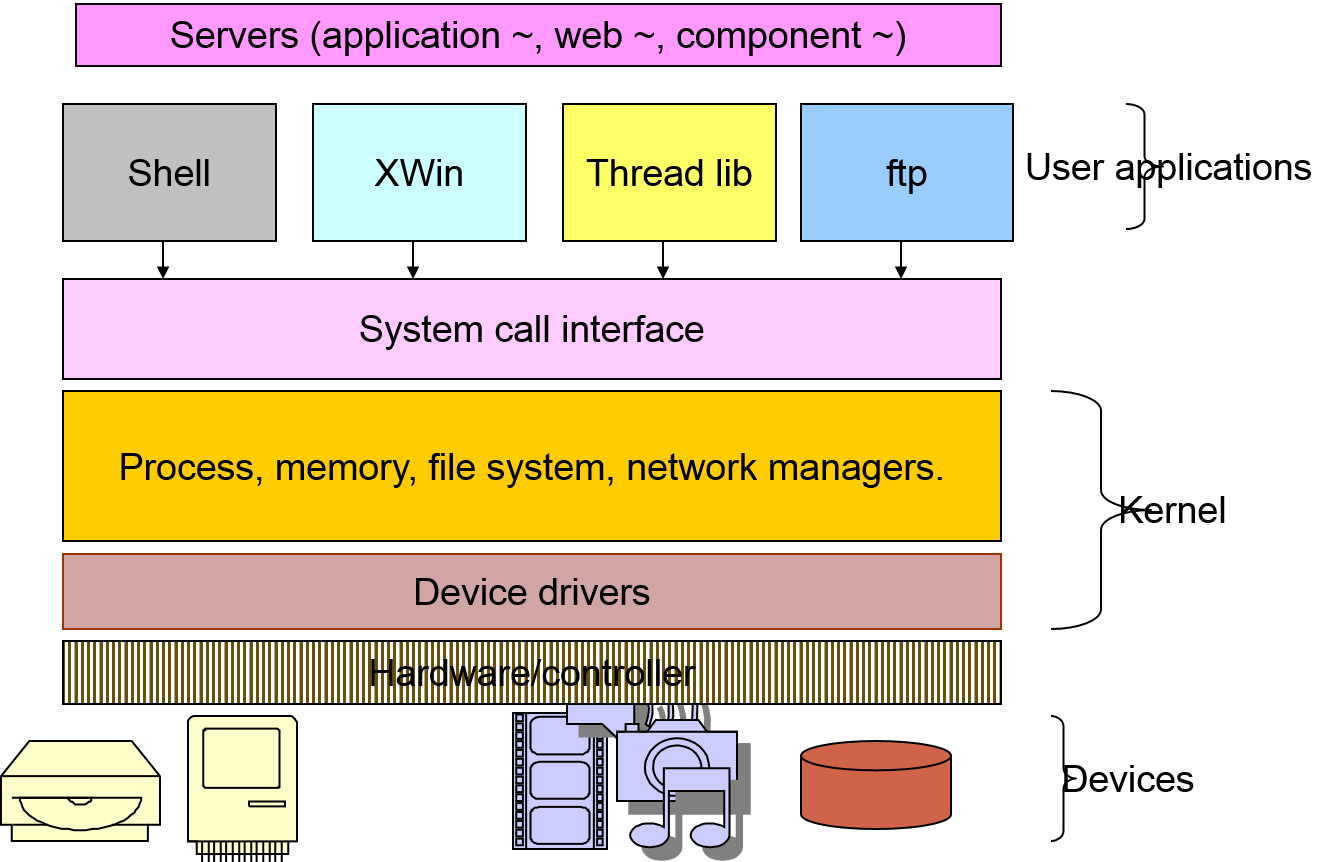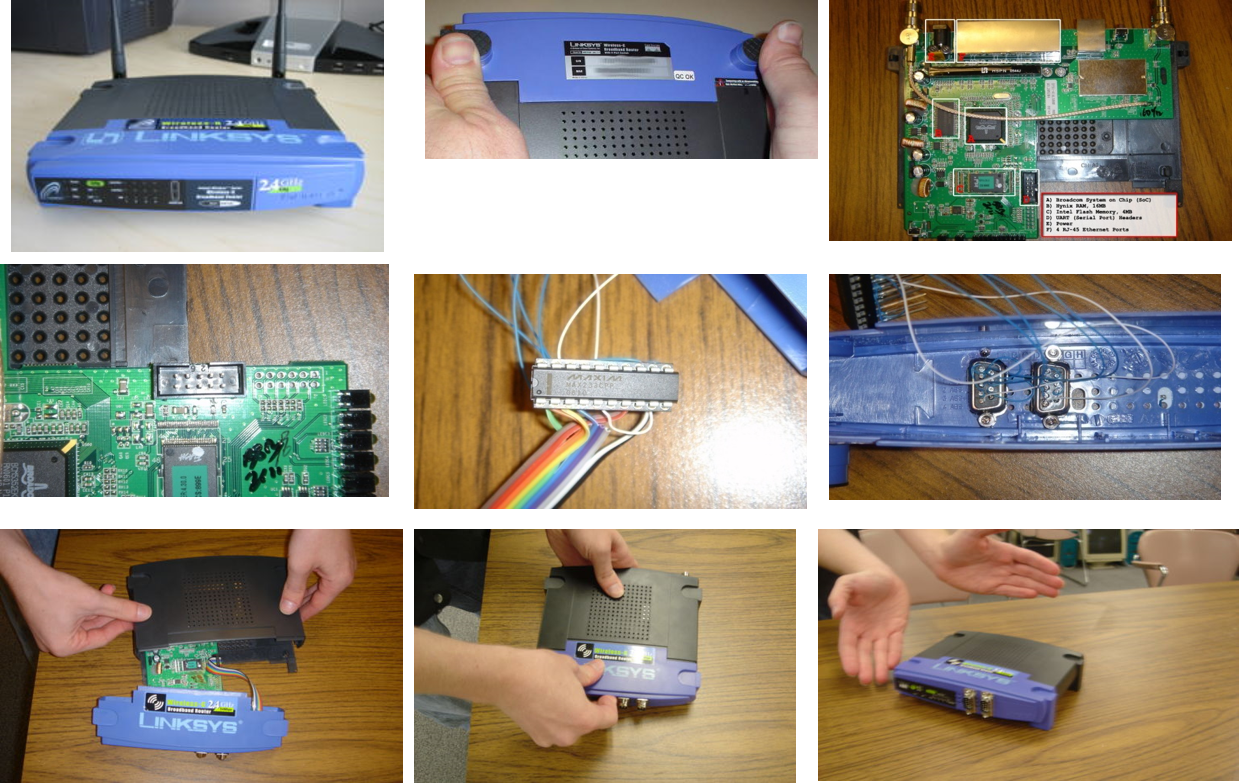Device Driver
Understanding Device Drivers
Project Report
Introduction
A device driver is computer program that allows a system to interface with hardware devices.Example driver: printer driver, bluetooth driver, IoT driver
Example devices: your USB stick, sensors: accelerometer
It is a translator between the operating system and applications the use the devices and the devices.
A typical operating system has many device drivers built into it. A device driver converts general IO instructions into device specific operations.
Device drivers operate in a privileged mode requires careful design
Motivation for device driver?
- A typical computing system (lap top, computer, cell phone, PDA, Point of sale system) deals with a variety of devices.
- Making a hardware device work as expected is a cumbersome task.
- Instead adding this code every application, operating system provides a single point interface for all devices by hosting the device drivers.
- Adding it under the operating systems provides the protection and security needed for the device drivers from malicious use.
- The device drivers are essentially shared dynamically linked libraries.
Device Driver
What do you with a device? {read, write}, {read only}, {write only}
Lets look at some examples: USB device, CD-ROM, LED Display,
What do you do with a file? open, close, read, write, ..
File is an excellent abstraction for devices.
Illustrative dev directory
total 380
lrwxrwxrwx 1 root 30 Mar 7 2004 allkmem -> ../devices/pseudo/mm@0:
allkmem
lrwxrwxrwx 1 root 27 Aug 15 2001 arp -> ../devices/pseudo/arp@0:arp
lrwxrwxrwx 1 root 7 Aug 15 2001 audio -> sound/0
lrwxrwxrwx 1 root 10 Aug 15 2001 audioctl -> sound/0ctl
lrwxrwxrwx 1 root 11 Oct 4 03:06 bd.off -> /dev/term/b
drwxr-xr-x 2 root 512 Aug 17 2001 cfg
lrwxrwxrwx 1 root 31 Aug 15 2001 conslog -> ../devices/pseudo/log@0
:conslog
lrwxrwxrwx 1 root 30 Aug 15 2001 console -> ../devices/pseudo/cn@0:
console
drwxr-xr-x 2 root 512 Aug 15 2001 cua
drwxr-xr-x 2 root 2048 Aug 31 2002 dsk
lrwxrwxrwx 1 root 29 Aug 15 2001 dump -> ../devices/pseudo/dump@0:d
ump
lrwxrwxrwx 1 root 50 Aug 15 2001 ecpp0 -> ../devices/pci@1f,4000/eb
us@1/ecpp@14,3043bc:ecpp0
lrwxrwxrwx 1 root 8 Aug 15 2001 fb0 -> fbs/ffb0
drwxr-xr-x 2 root 512 Aug 15 2001 fbs
dr-xr-xr-x 2 root 528 Nov 9 11:51 fd
lrwxrwxrwx 1 root 30 Apr 7 2002 fssnapctl -> ../devices/pseudo/
Device Space
Typically there are multiple devices of the same type. All the devices controlled by the same device driver is given the same “major number” A “minor number” distinguishes among the devices of the same type. Example: printers have a major number since purpose is same, minor# is denote a specific printerDevice Driver Philosophy
Hide the hardware completely: hardware abstractionIf the device generates any interrupts include interrupt controllers.
Device driver presents a generic interface for applications at higher level to access the devices: device.h
Device drivers in embedded systems are different from general purpose operating systems: See diagram on the sidebar.
Applications in general purpose systems accesses OS (Operating Systems) which in turn accesses device drivers.
Applications in embedded systems can directly access device drivers.
Device Driver Development Steps
- An interface to the control and status registers.
- Variables to track the current state of the physical and logical devices
- Major and minor device number, device name
- A routine to initialize the hardware to known state
- An API for users of the device driver -- Read, write, seek
- Interrupts service routines
Xinu Serial Device Driver
Now lets look at the UARTdriver of the embedded xinu and WRT54GL. Study the tty driver that is a logical device that is layered on top of the UART driver. Discuss how you would develop a device driver for a framebuffer.. This was a lab2 last year.Take a look at files in the include directory: device.h, tty.h, uart.h
Also in the system directory devtable.c, initialize.c
Bottom line is this, for a device xyz:
- Include a file in include directory: xyz.h -- define the operations/functions for the device
- Add a directory xyz -- implement all functions each in its own file
- Add an entry in the devtable.c for the device (note that this has the “minor” device number along with other things)
Lets Understand UART Driver
Starting point: uart.h in include directoryuart directory functions
system directory devtable.c, initialize.c
Usage of the devices is through device table:
Ex: pdev = &devtab[i]; (pdev->init)(pdev);
General device driver related files: device.h, devtable.c
Uart files: uart.h defining the physical features of the uart
All the files in the uart directory that implement the operations related to the uart.
uartControl.c uartInit.c uartIntr.c
uartPutChar.c uartWrite.c uartGetChar.c uartRead.c
On board devices are called internal peripherals and one outside are called external peripherals
UART Chip (internal)
TTY (external)
UART-> transceiver ->RS232 ->D-9 connector -> laptop serial socket
See the sidebar for WRT54GL board and modifications.
Embedded processor interacts with a peripheral device through a set of control and status registers. Registers are part of the peripheral device. These devices are located in the memory space of the processor or I/O space of the processor-- two types: memory-mapped or I/O mapped respectively.
The keyword volatile should be used when declaring pointers to device drivers. Bit patterns for testing, setting, clearing, toggling, shifting bits, bitmasks, and bitfields. Struct overlays: In embedded systems featuring memory mapped IO devices, it is common to overlay a C struct on to each peripheral’s control and status registers. This will provide the offsets for the various registers from the base address of the device.
Device Driver Design
Lets study the design of UART design driver.Xinu Code Modification
Here the xinu code with modifications to include a framebuffer as a shell command.
Let's review Xinu code: intialize.c, main.c.
Also Term Project Report.


